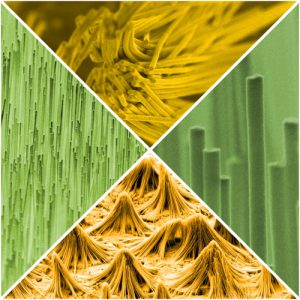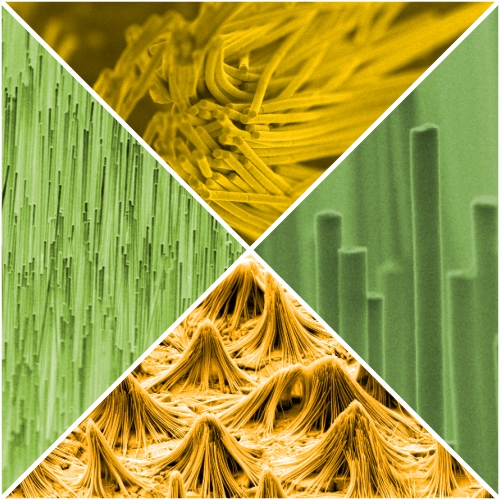
The synthesis of several types of one-dimensional structures like nanowires, nanobelts, and nanotubes have recently attracted considerable interest. Because of their one-dimensional structure vertically aligned nanostructural arrays exhibit a much higher active surface than comparable thin film arrays.
In particular, vertical aligned arrays of semiconductive nanostructures with a high length/diameter aspect ratio opens up a broad spectrum of novel applications. Uniform and free standing assembly of nanostructures are promising materials for photovoltaic or light emitting applications, due to their well defined channels working as carriers. One of the cost effective methods to achieve nantoubes or nanowires with high aspect ratios (HARs) is the template deposition method.
However, any HAR structures synthesized using any currently existing template method have the major disadvantage of these methods occurring during the separation of the nanostructures from the template. The higher the aspect ratio of length and diameter, the more the nanostructures tends to collapse into wheat-like structures.
At the Darmstadt University of Technology, Germany, M. Böhme and Professor Ensinger developed a novel process to inhibit the mechanism of collapsing nanostructures synthesized by template-based deposition. They succeeded in the controlled fabrication of nanograss-like and free standing nanostructures with a high length/ diameter aspect ratio.
Böhme and Ensinger used liquid CO2 as a treating agent instead of dichloromethane with its high surface energy leading the nanostructures across into an ambient with low surface energy. Thus they were capable of preventing the nanostructures collapsing during any step of operation. Significantly, this procedure provides a fundamental technique for all kinds of applications and devices based on one-dimensional HAR nanostructures.

